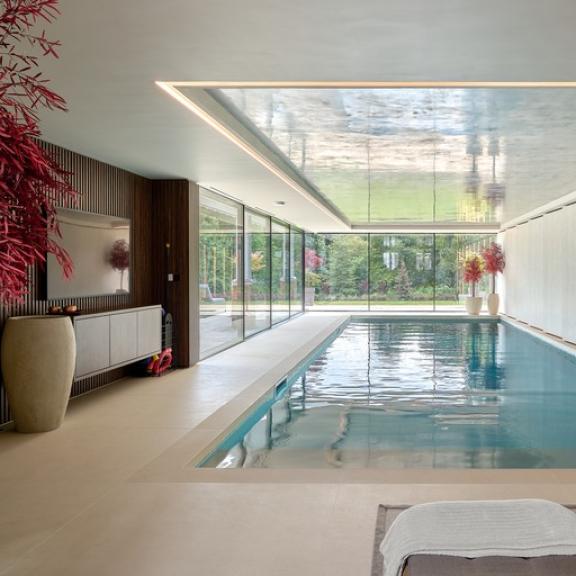Graduate Outcomes Analysis
The BIID publishes analysis of the diversity of interior design graduates from UK higher education institutions.
We are proud to publish the UK’s first analysis of the career outcomes of recent interior design graduates. This report is based on the same dataset as our previous report ‘Diversity Analysis of Interior Design Students at UK institutions’. The Higher Education Statistics Agency (HESA) surveys graduates of universities across the UK to determine their destinations after university. The analysis relates to interior design students graduating in 2017/8 and analysis was provided by the Royal Statistical Society’s Statisticians for Society initiative.
We have summarised the key findings of the report here and the full report can be downloaded at the bottom of this article.
The following figures relate to interior design students graduating in 2017/8, when surveyed 18 months after graduation:
Employment Skill Level
The results showed 74% of those surveyed were employed or about to start work. However, unemployment was higher than for the UK average (6% of interior design graduates compared to 4% of other graduates). Of those who were employed, 74% of interior design graduates were in highskilled occupations including interior design. 18% were in low-skilled jobs; this is twice the UK rate of 9% for graduates.
Figure 3.1: Graduate outcomes 2017/18
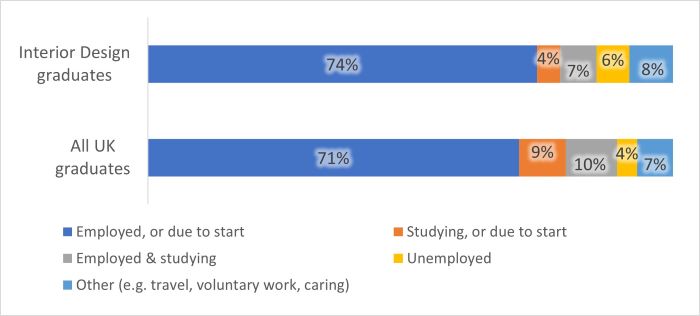
Note: Bar for ‘Interior Design graduates’ based on 1,033 survey respondents.
For this same group of interior design students graduating in 2017/18, employment pathways depended partly on demographic characteristics.
Gender
Females were more likely to go into interior design, whereas males went into other professions. Females were also more likely to be in a low-skilled occupation when surveyed.
Figure 4.1: Occupations of interior design graduates, by gender
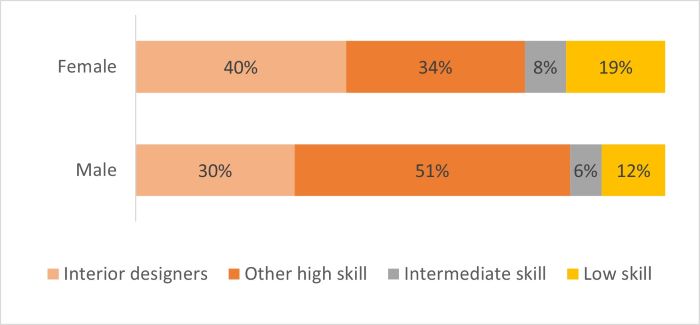
Notes: based on sample of 715 individuals where occupation & gender are known.
Socio-economic Group
There was very slight evidence that those for whom neither parent had a degree were more likely to end up in lowskilled jobs. However, further analysis of this would be needed before reaching firm conclusions.
Figure 4.2: Occupations of interior design graduates, by parental education
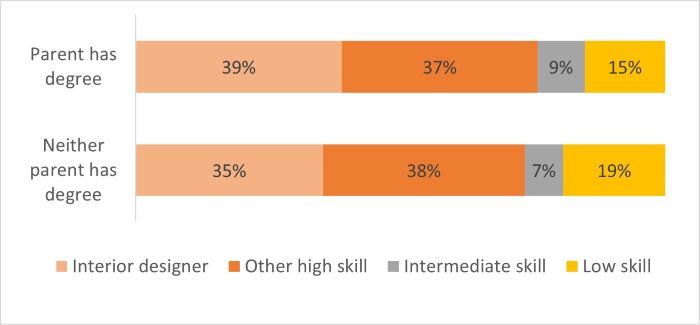
Notes: based on sample of 532 individuals.
Ethnicity
Ethnic minorities were more likely to be in a low-skilled occupation when surveyed. It should be noted that this is higher than across UK graduates with degrees not in interior design. This suggests there may be particular difficulties for ethnic minorities who have interior design degrees.
Figure 4.3: Occupations of interior design graduates, by ethnicity where known.
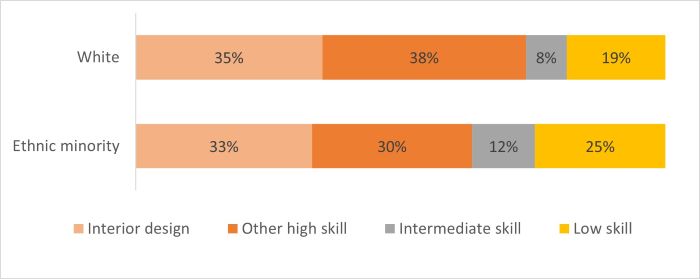
Next Steps
This research is one part of the picture that will help inform the work of our new BIID Diversity and Inclusion Committee . The committee are reviewing all of our recently published diversity research and using it to help them when recommending next steps as part of the BIID’s longer term diversity and inclusion strategy.
*SOURCES:
HESA Student Record 2015/16;HESA Student Record 2014/15;HESA Student Record 2016/17;HESA Student Record 2017/18; HESA Student Record 2018/19. Copyright Higher Education Statistics Agency Limited. Neither the Higher Education Statistics Agency Limited nor HESA Services Limited can accept responsibility for any inferences or conclusions derived by third parties from data or other information supplied by the Higher Education Statistics Agency Limited or HESA Services Limited.
Office for National Statistics licensed under the Open Government Licence v.3.0
**Ethnic backgrounds included in the ethnic groups used above:
- Asian (Indian, Pakistani, Bangladeshi, Chinese, Any other Asian background)
- Black (African, Caribbean, Any other Black, African or Caribbean background)
- Other (White and Black Caribbean, White and Black African, White and Asian, Any other Mixed or Multiple ethnic background, Arab, Any other ethnic group)
- White (English, Welsh, Scottish, Northern Irish or British, Irish, Gypsy or Irish Traveller, Any other White background)
Download the Full Report.
Read more of our research and analysis in our Diversity in Interior Design Survey Results.
Explore new resources from the BIID. Seeing a padlock? Just login or become a member to view.
View the highlights from our 60th anniversary party
We asked Anna Burles: What makes the perfect software?
Discover the smart home technology awards with Platinum Partner, CEDIA
Explore the latest, member-exclusive, templates designed to make your life easier.
University of Gloucestershire wins the BIID Student Design Challenge 2025.



